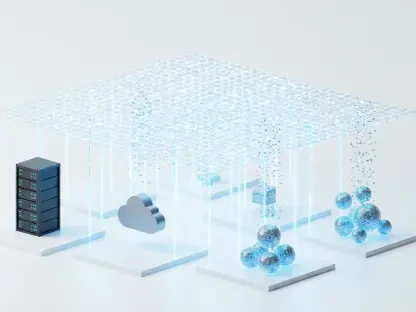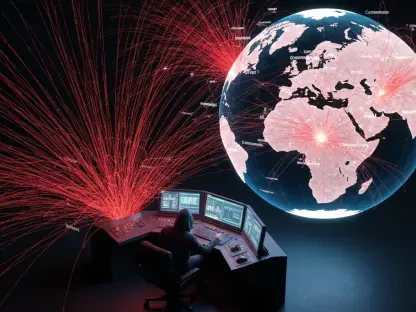The landscape of humanoid robotics is undergoing a profound transformation with the introduction of affordable open-source robots by Hugging Face. Known primarily for its work in artificial intelligence, Hugging Face is now poised to make significant inroads into the realm of robotics. This audacious move aims to democratize access to cutting-edge robotic technologies, traditionally dominated by entrenched industry behemoths, through innovative and cost-effective products. With the release of HopeJR and Reachy Mini, Hugging Face is not only delivering advanced robotics with transparent systems but also fostering a collaborative ecosystem for augmented innovation and research.
Democratizing Robotics with Open-Source Models
Innovative Approach to Robotics
Hugging Face’s launch of two advanced yet accessible humanoid robots represents a major shift in how robotics can be perceived and utilized across various sectors. HopeJR and Reachy Mini, designed to be affordable, break from the norm of exorbitantly priced proprietary models that characterize the current market. HopeJR, a larger model set to retail at around $3,000, showcases Hugging Face’s commitment to affordability without sacrificing functionality. Meanwhile, Reachy Mini, priced between $250 and $300, offers a desktop-sized alternative for developers and hobbyists, significantly reducing entry barriers for those eager to explore robotics.
Both robots are fully compatible with LeRobot, an open-source framework that underscores Hugging Face’s strategy to make robotics more accessible and transparent. This compatibility ensures that researchers and developers of varying expertise can engage with these platforms, gaining the ability to modify and customize them comprehensively. The large-scale deployment of such accessible technology promises to disrupt the status quo, encouraging a more inclusive environment where knowledge can be shared freely and innovations are community-driven. With HopeJR and Reachy Mini, Hugging Face is setting a new precedent in fostering innovation through diversity and collaboration in robotic technologies.
Modular Design and Potential Applications
The modular design of HopeJR enables a wide array of functionalities, positioning it as an ideal tool for researchers and institutions seeking advanced robotic capabilities. With 66 independent movements, it affords complex actions such as walking and sophisticated arm manipulations. This range of motion elevates its suitability for experimental setups and advanced research endeavors that require intricate manipulative tasks. Meanwhile, Reachy Mini serves as a versatile testbed for AI applications, emphasizing its potential as both an educational instrument and a platform for creative development in embodied AI.
These robots are not merely about performance efficiency but also serve a pivotal role in education and development. Reachy Mini’s ability to communicate and move its head suggests practical applications in diverse educational settings, offering an interactive medium through which users can better understand robotics. This potential to serve as both educational tools and launchpads for deeper exploratory research appeals to a wide range of interests. The integration of open-source principles ensures that developers retain full access to hardware and software configurations, accelerating development through community contributions and collective problem-solving.
The Impact on the Robotics Landscape
Broadening Accessibility and Innovation
The initiative by Hugging Face to introduce open-source humanoid robots invites a broader audience to partake in an industry that has traditionally been the realm of large corporations and specialized researchers. By designing robots that are not only accessible in terms of cost but also open-source, Hugging Face enhances transparency in use and development. This strategy is instrumental in nurturing a spirit of inclusivity and collective innovation, which can have a significant impact on the pace at which robotics technologies evolve in the coming years.
The open-source nature of these robots contributes to broader adoption, as it empowers a wide array of users, from academic researchers to freelance developers and tech enthusiasts, to engage deeply with robotic technologies. This shift encourages the generation of diverse AI software developments tailored to meet various needs and applications. As a result, Hugging Face’s initiative embodies a movement toward distributed innovation, significantly expanding the potential use cases of robots beyond traditional industrial and commercial applications and increasingly into education, healthcare, and personal development sectors.
Competition and Industry Dynamics
The entry of affordable, open-source robots into the market is likely to redefine competitive dynamics within the humanoid robotics sector. While industry giants like Tesla and Meta pursue ambitions involving higher-priced, proprietary models, Hugging Face’s offering presents an appealing alternative for a broader demographic. The strategy employed by Hugging Face is in stark contrast to the approaches of large companies that emphasize tightly controlled, closed-source systems. This divergence in strategies could catalyze new trends in the market, fostering a more competitive and vibrant industry landscape.
Companies focused on proprietary models may face increased pressure to adapt to the evolving expectations of the consumer base, which is becoming more inclined toward transparency and collaborative development. This, in turn, could spark developments in open-source technologies and encourage existing players to pivot strategies. Hugging Face’s venture thus marks a significant milestone, potentially altering the course of robotics advancement by emphasizing the benefits of collective intelligence and shared technological progress.
Collaborative Future in Robotics
Evolving Roles of Community and Collaboration
As the robotics market matures, the role of community collaboration becomes increasingly crucial in driving innovations. Hugging Face’s open-source approach aligns with current trends, emphasizing inclusivity and shared learning as pivotal elements for progress in robotics research and development. This strategy attracts diverse contributions from global communities, leading to richer developments and specialized AI advances that can be integrated into robotic systems. These community-driven improvements have the potential to address existing challenges, such as fine motor control and navigation in unstructured environments, rapidly and effectively.
The development of open-source AI models continues to propel advancements in humanoid robotics, offering promising opportunities for HopeJR and Reachy Mini in particular. As developers and tech enthusiasts around the globe contribute to refining these platforms, the collaborative efforts are expected to result in superior general-purpose and specialized functionalities tailored to real-world applications. Hugging Face’s robotics initiative, thus, fosters a vibrant ecosystem that rewards creativity and shared input, significantly impacting the trajectory of future innovations.
Future Prospects and Industry Implications
Hugging Face, predominantly recognized for its pioneering work in artificial intelligence, is now revolutionizing the field of humanoid robotics by introducing cost-effective, open-source robots. This strategic shift is designed to make cutting-edge robotic technologies more accessible, shaking up an industry traditionally dominated by major corporations. With the debut of HopeJR and Reachy Mini, Hugging Face is offering sophisticated robotic systems that are not only advanced but also transparent. This endeavor aims to democratize the sector and is part of a broader effort to foster a collaborative and innovative environment for researchers and tech enthusiasts. By doing so, Hugging Face is breaking down barriers and allowing a wider range of individuals and organizations to engage with and contribute to robotics development. The introduction of these products marks a significant step forward in the evolution of robotics, as they challenge existing norms and offer new opportunities for creative development and exploration within the field.









